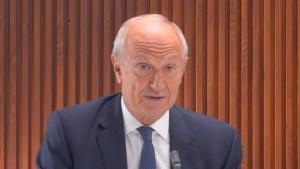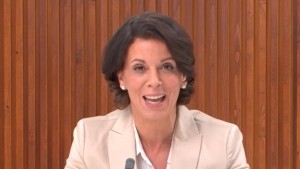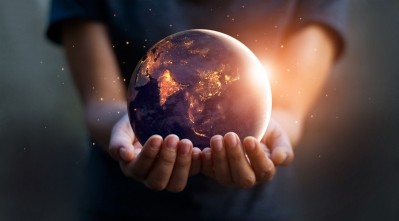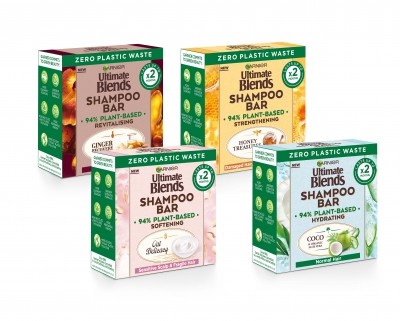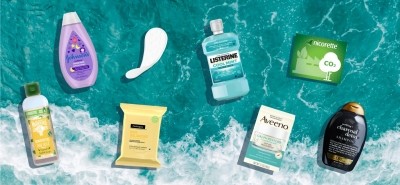The long-read: In-depth on L’Oréal’s ‘For the Future’ 2030 Sustainability Plan
‘Entering a new era’: L’Oréal outlines 2030 sustainability goals on plastics, carbon emissions and more
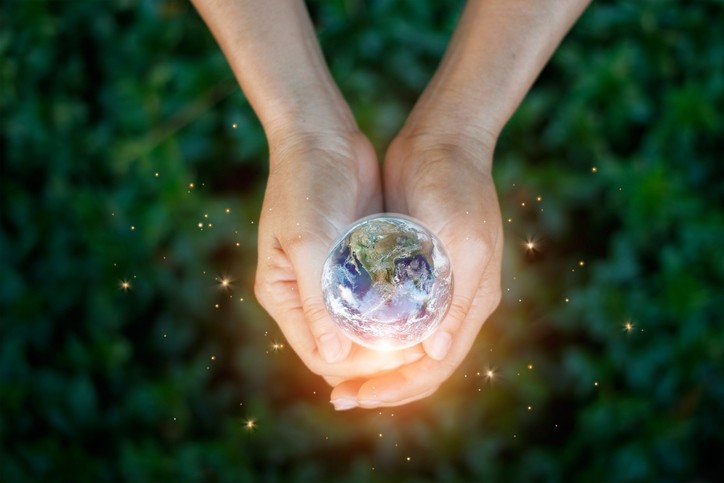
The beauty major also unveiled its new environmental and social impact labelling system that it planned to eventually roll out globally across all products and categories, starting with all rinse-off products, except travel sizes, by 2022.
‘For the future’ 2030 support program – people and planet
L’Oréal first announced its €150m ‘for the future’ program last month – a multi-million environmental and social protection pledge aimed at supporting vulnerable women and protecting the planet’s ecosystems; especially pressing in a post-COVID-19 world, it said.
In its announcement, L’Oréal said funds would be split with €50m going to a charitable endowment fund that supported organisations working with vulnerable women; the remaining €100m would be divided between work to regenerate damaged natural ecosystems and actions to prevent climate change.
At the time, L’Oréal said full details of its business sustainability goals would be released soon – all of which had now been clearly outlined in the unveiling of its 2030 sustainability plan.
Beauty’s role in preventing a climate crisis – ‘we don’t have much time’
“L’Oréal’s sustainable revolution is entering a new era,” said Jean-Paul Agon, chairman and CEO of L’Oréal. “The challenges the planet is facing are unprecedented, and it is essential to accelerate our efforts to preserve a safe operating space for humanity (…) We know that the biggest challenges remain to come, and L’Oréal will stay faithful to its ambition: operate within the limits of the planet,” Agon said.
Speaking at L’Oréal’s press conference to launch its ‘for the future’ sustainability program, he said acting now was even more important, given how “devastating” the ongoing coronavirus (COVID-19) pandemic had been worldwide.
“It’s just a very strong wake-up call to all about what could be the climate crisis to come, so I think it’s very important to do everything we can (…) We don’t have much time. The experts all agree that we have ten years to do what it takes to prevent this climate crisis and to do what’s needed in terms of sustainability.”
L’Oréal’s 2013-2020 ‘sharing beauty with all’ sustainability plan was now coming to an end, Agon said, so it was time to move the business into the “second-phase” of sustainable planning, which would be “even more ambitious” and “bolder”.
Plastics, greenhouse gases, carbon neutrality and living wages
Alexandra Palt, chief corporate responsibility officer at L’Oréal, said that over the past decade under its ‘sharing beauty with all’ plan, the company had already “profoundly transformed” its business model to bring sustainability to its core. The latest sustainability goals – taking the company up to 2030 – would see L’Oréal enter “a new phase of acceleration of that transformation”, Palt said.
Among the raft of new goals announced under its ‘for the future’ program, L’Oréal pledged that by 2030 all plastics packaging would be made from recycled or bio-based materials as well as reducing the amount of packaging used by 20%. L’Oréal would also ensure 95% of all ingredients used in formulations were either bio-based, derived from abundant minerals or made from circular processes. All bio-based ingredients used – in formulations and packaging – would also be fully traceable with none linked to deforestation and total land occupancy maintained at levels used in 2019.
By 2030, L’Oréal said its entire greenhouse gas emissions would be also slashed 50% per finished product and all strategic suppliers would also have reduced direct emissions by 50% in absolute terms versus 2016. By 2025, all L’Oréal sites would also achieve “carbon neutrality” by improving efficiency and using renewable energy sources and by 2030 all water used in the company’s industrial proceedings would be recycled and reused in a closed loop model.
L’Oréal would also work to ensure all persons employed by its suppliers were paid a living wage by 2030 and pledged to help 100,000 people from disadvantaged communities gain access to employment.
Palt said: “We are not going to forget that there is also an inclusive society necessary to lead an environmental transition.”
‘We are not starting from scratch’
Each of these goals aimed to build on ongoing work, L’Oréal said, much of which had been kickstarted under its ‘sharing beauty with all’ plan.
“We are not starting from scratch. Very early on, L’Oréal became aware of the need to respond to environmental challenges. As an industrial company, it decided that tackling the environmental impact of its plants and distribution centres was the most obvious first step, and a necessary one, to begin its transformation process.”
Since 2005, the L’Oréal Group had already reduced CO2 emissions by 78% in absolute terms across its plants and distribution centres and by the end of 2019 had already established 35 carbon neutral sites that used 100% renewable energy – 14 of which were factories. This year, L’Oréal would have more than 40 carbon neutral sites.
L’Oréal had also achieved an ‘A’ score on climate protection, water management and forest preservation for four years running – rankings made by CDP Global, an international non-profit organisation that helped companies measure and manage risks and opportunities in these three areas through a global disclosure system.
L’Oréal said it would continue to transform business to respect “planetary boundaries” – limits which, if crossed, would compromise the earth’s capacity as a habitat for human development.
“Respecting a safe operating space for humanity must be a priority in the decades to come, as scientists unanimously agree,” it said.
‘The real goal is to embark our consumer’ – sustainable beauty impact
Agon said transforming business was important for L’Oréal but its goals stretched further than that.
“What’s very important for us is to not only change what we do, to transform ourselves, but to transform broader than that: to transform the industry, the ecosystem. So, what we want to play is a role of leadership in the transformation of industry. So, we are embarking our suppliers, embarking our retailers, our partners, and in a way even embarking our competitors because they will see what we do and they will try to do the same, and it’s good. It’s super important,” he said.
But beyond industry change, Agon said it would also be crucial to get consumers on board. “We have many, many consumers and we sell more than seven billion products a year, so the real goal is to embark our consumer because this is the way we’ll have maximum impact.”
Under its ‘for the future’ program, Palt said L’Oréal would empower consumers to each reduce their own greenhouse gas emissions by 25%. This would be done through extensive product innovations, she said, like faster rinse-off formulations for quicker shower times, as well as consumer outreach work to build awareness.
The most significant consumer engagement aspect, however, would come from L’Oréal’s environmental and social impact labelling mechanism that would see every product scored from A to E – an ‘A’ product being ‘best in class’ in terms of overall impact.
L’Oréal said its labelling system – endorsed by independent scientific experts, with all data verified by independent auditors – was about “empowering” consumers to make sustainable consumption choices.
L’Oréal planned to progressively roll out the labels across all its brands and categories worldwide, starting with Garnier hair care products in France this year.
“We believe it is our responsibility to involve our consumers, suppliers and the communities we work with in our transformation process, to help them transition to a more sustainable world,” L’Oréal said.
